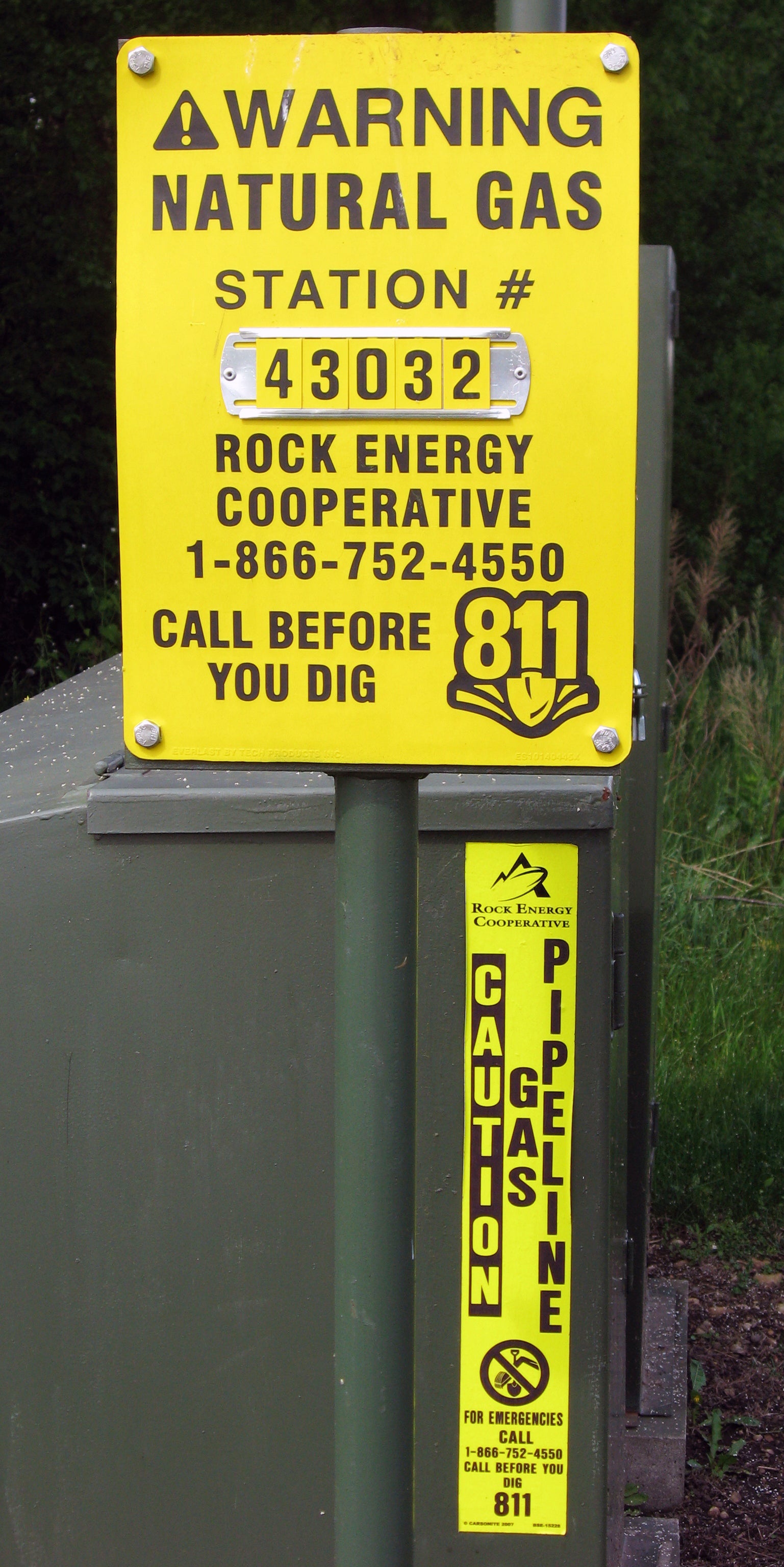RECOGNIZING & REACTING TO A PIPELINE LEAK
Look:
- Discolored or dead vegetation
- Flames coming from the ground
- A cloud of vapor, fog or mist
- A pool of liquid on the ground or bubbling in a wet, flooded area
- Dirt blowing in the air
- A rainbow or sheen on the water
Listen: An unusual hissing, roaring, or bubbling noise
Smell: Strange and unusual gaseous or chemical odors. Gas transmission lines do not
have an odor, but in some cases may include a chemical such as Mercapton,
of which this is the typical product used in gas distribution lines. This smell has
been described as rotten eggs. Landfill gas lines tend to have a bitter, pungent
smell typical of landfill garbage. Gas gathering has been described as having a
sweet petroleum and very gaseous hydrocarbon type odor. Most HVL (Y-grades/
Propane) transmission pipelines are known for their propane type of smell. In
some rare cases, some gas distribution lines transport Acetylene which is known
for its garlic type smell.
The following guidelines are designed to ensure your safety and the safety of those in the area if a pipeline leak is suspected or detected.
- DO leave the immediate area on foot. Move away from the potential leak and maintain a safe distance. Abandon any equipment being used in or near the area.
- DO go directly to a safe location and call 911 and the pipeline company’s emergency number.
- DO warn others to stay away.
- DO NOT create any potential ignition source such as flipping an electrical switch, starting a motorized vehicle, lighting an open flame, ringing a doorbell, etc.
- DO NOT come into direct contact with any escaping liquids or gas.
- DO NOT drive into a leak or vapor cloud while leaving the area.
- DO NOT attempt to make any repairs or operate any pipeline valves yourself. You may inadvertently route more product to the leak or cause a secondary incident.
- DO NOT attempt to extinguish any fires.
- DO NOT use e-mail, text, or the Internet to contact the company about a leak, and never assume someone else has reported the leak.
Pipeline Locations, Markers, and Locating
Do not plant trees, high shrubs, or any vegetation that would impede access to the right-of-way. Likewise, do not dig, excavate, operate heavy equipment, build, store, or place anything on the right-of- way.

Encroachments on the pipeline ROW inhibit Pipeline Operator’s ability to:
- • Respond to a pipeline emergency.
- • Perform routine maintenance.
- • Perform required federal and state inspections.
- • Monitor for unauthorized excavation near the pipeline.
Pipeline markers are placed where pipelines intersect public roads, river crossings, and railroad crossings. Markers display the operator’s name, phone number, and the product being transported.
- Pipeline markers are found within the pipeline right-of-way and are used to signify important information.
- Indicate the approximate location of a pipeline; cannot be used to determine exact location or depth.
- Can be found where lines meet at public access points, above ground facilities, streets, highways, waterways, and railway intersections.
- Display the pipeline operators name, emergency number, and product transported.
